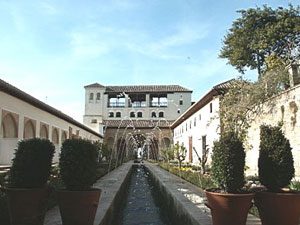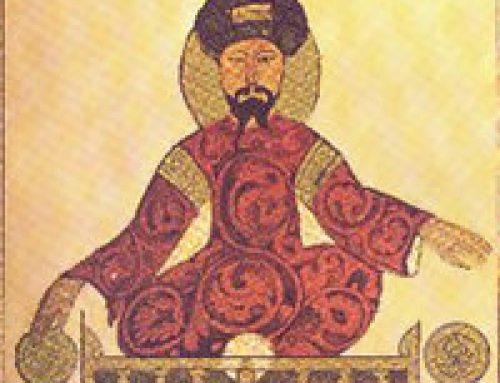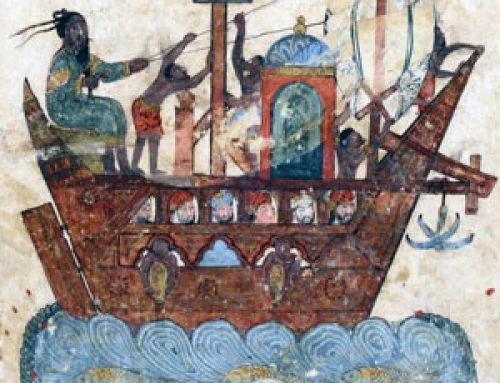
Kairouan (about 800 AD)
The first Islamic buildings
Greek architects designed the first buildings in the new Islamic Empire. They had already been living in the area when the Arabs conquered it. Because Greek architects designed them, these buildings look a lot like earlier buildings in West Asia – Late Roman Empire buildings like Hagia Sophia.
Roman architecture
What is Hagia Sophia?
Umayyad architecture
All our Islamic Empire articles
The first mosques
But now they were building Islamic mosques and not Christian churches. So these Greek architects were able to experiment with some new forms, developing a new Islamic style. One of the earliest mosques is the Dome of the Rock in Jerusalem, from the 600s AD. It’s octagonal, like Hadrian’s Pantheon, instead of being cross-shaped like a Christian church. In the late 700s AD, the new Arab rulers of North Africa and Spain wanted to mark their new territory. They built great mosques like the one at Kairouan (modern Tunisia) and the one at Cordoba in Spain.
What is a mosque?
The mosque at Kairouan

Gate of Al-Hakim mosque
Abbasid architecture
In the 800s AD, the Abbasid caliphs rejected the Roman identity. They moved the capital of the Islamic empire further east, to Baghdad. The caliphs needed a lot of new beautiful palaces and mosques and university buildings built in Baghdad.
More Abbasid architecture

Bibi Hanum Mosque, Samarkand (1300s AD)
Because Baghdad was in the old Sassanian Empire, the architects who lived there followed Sassanian architectural traditions. These buildings, like the mosque at Samarra, looked very different from the ones built by the Greek architects. In the end, though, the Islamic Empire made it so easy to travel around that all the architects got to know each other’s styles. There got to be one main style of building all across the Islamic Empire, which was a mixture of the Roman and Sassanian styles.

University of Fez, Morocco (1130s AD)
Islamic schools and caravanserais
Islamic architects didn’t just build mosques. They built many schools – maktabs and madrassas and universities – all across the Islamic Empire. And they build big caravanserais along the Silk Road. These were hotels where traveling traders could stay safely for free, to encourage trade.
Later Islamic architecture

Mudbrick walls and the Djenne mosque (Mali)
As the empire broke down into a lot of smaller kingdoms, the rulers of each kingdom needed to show how important they were, so they built mosques and palaces in their own capitals. The Fatimids, for example, built the Al-Azhar mosque in Cairo in the 900s AD.
Fatimid architecture
Almohad architecture
Hafsid architecture
Medieval African architecture
Delhi Sultanate architecture

Quwat ul-Islam, Delhi, 1196 AD
In Spain in the late 1200s AD, the Almohads, built their own palace at Granada, the Alhambra. Even in northern India, people built mosques in an Islamic style, and even down the coast of East Africa, and in West Africa.
The Ottoman sultan built the last great Islamic building before 1500 AD – his palace in Istanbul, which he built in the late 1400s AD.

An inner courtyard of the Alhambra



